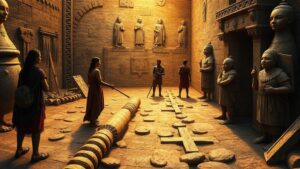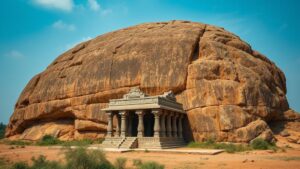Chasing the “Golden Ark” in South American myths of lost riches.
Chasing the Golden Ark in South American Myths of Lost Riches
The allure of lost treasures has captivated explorers and adventurers for centuries. Among the most famous legends embedded in South American culture is that of the Golden Ark, or more commonly known as El Dorado. This myth presents a tantalizing vision of a city overflowing with riches, particularly gold, hidden deep within the continent’s lush jungles and mountainous terrains. Understanding this myth requires diving into its origins, the historical context, and the realities behind these enduring tales.
The Origins of the El Dorado Legend
The legend of El Dorado can be traced back to the early 16th century, initially narrated by Spanish conquistadors. The term El Dorado translates to The Golden One, and it originally referred to a ruler of the Muisca Confederation in present-day Colombia, who would cover himself in gold dust and make offerings to the gods by casting gold objects into Lake Guatavita.
European explorers mistakenly believed this practice indicated the existence of a wealthy city or civilization filled with riches. This misconception spurred numerous expeditions into the South American interior, particularly during the Spanish colonization period. One notable figure was Gonzalo Pizarro, who undertook a journey in 1541 seeking the riches of El Dorado, leading him to the Amazon region.
Historical Expeditions and Their Impacts
Throughout the 16th and 17th centuries, dozens of explorers felt compelled to find El Dorado, driven by dreams of wealth. Some of the most famous expeditions include:
- Francisco Orellana in 1542: He is credited with the first navigation of the Amazon River, and although he did not find El Dorado, his reports fueled interest in its existence.
- Sir Walter Raleighs 1595 expedition: An English explorer who sought to find a city of gold called Manoa, believed to be another manifestation of the El Dorado myth in the Orinoco River Basin.
- La Condamines journey in 1735: A French explorer who conducted scientific expeditions in the Amazon, seeking valuable resources rather than gold, highlighting the myths shifts over time.
Each expedition not only sought riches but also had profound consequences for the indigenous populations and ecosystems of South America, a tragic byproduct of the quest for wealth. The relentless pursuit of gold led to exploitation, violence, and significant cultural changes among the native tribes.
The Psychology Behind the Myth
The myth of El Dorado has fascinated generations, tapping into deep-seated human desires for wealth and adventure. In many ways, El Dorado symbolizes the broader themes of exploration and the unknown. This reflects a universal psychological principle where the chase often becomes more significant than the actual goal–as exemplified in the behaviors of these explorers who became obsessed with finding the legendary riches.
Also, this myth serves as a cautionary tale about the consequences of greed and colonization, reminding us that the pursuit of wealth can lead to the loss of humanity and reverberating effects on local cultures. Even in modern contexts, the concept of El Dorado continues to influence literature, cinema, and popular culture, showcasing its deep-rooted impact.
Contemporary Perspectives and Realities
In the 21st century, the legend of El Dorado has evolved, intertwining with contemporary environmental and cultural discussions. Some regions experiencing gold rushes face significant ecological challenges as illegal mining disrupts habitats and displaces indigenous communities. For example, the Madre de Dios region in Peru has witnessed such practices, leading to deforestation and pollution.
Mining operations today, whether formal or informal, highlight the ongoing struggle between economic gain and ecological preservation, demonstrating that the quest for gold still drives behavior reminiscent of the gold-hungry conquistadors of the past. Plus, modern archaeologists and anthropologists attempt to piece together lost cultures in the Amazon to better understand the societies that thrived long before European contact.
Actionable Takeaways
The enduring myth of El Dorado offers valuable lessons in both human history and contemporary environmental ethics:
- Recognizing the consequences of greed can lead to healthier economic practices.
- Understanding the rich cultural heritage of indigenous populations promotes awareness and respect.
- Exploring alternative, sustainable methods for resource extraction can mitigate ecological damage.
Ultimately, while the Golden Ark may remain elusive, the stories and wisdom garnered from the pursuits of past explorers can inform our present-day approaches to both culture and nature in South America.



